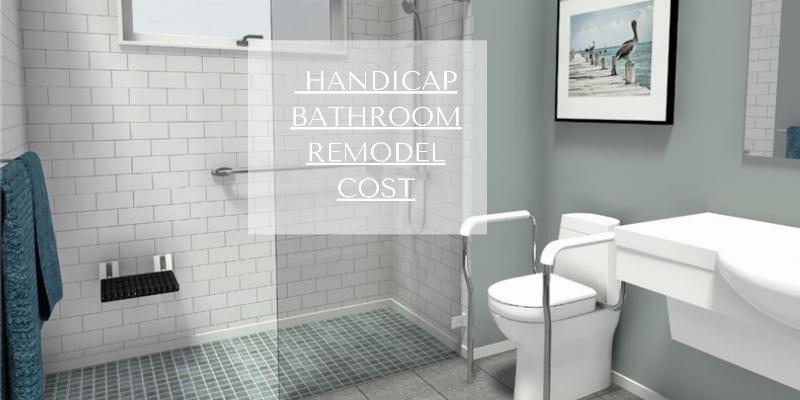Creating a handicap-accessible bathroom can transform your home into a safer and more accommodating space for individuals with mobility issues. The bathroom is often the most common room that homeowners redesign to accommodate the needs of disabled individuals. Adjustments can include installing grab bars, creating a barrier-free entry, or adding a bench and handheld shower for convenience. Other changes like replacing a vanity sink with a wall-hung model to allow wheelchair access may also be necessary.
Let’s explore the cost of remodeling a handicap-accessible bathroom in Houston and what factors can influence your budget.
How Much Should a Handicap Bathroom Remodel Cost?
The average cost to remodel a standard bathroom with a new shower, vanity cabinet, sink, toilet, and tile flooring in Houston is between $8,000 and $10,000. However, when adding handicap-accessible features, you can expect to spend an additional $2,000 to $3,000.
For more advanced features like a walk-in bathtub or widening the doorways to accommodate larger wheelchairs, costs can rise significantly. Other options such as non-slip flooring, lever faucet handles, and a higher toilet are additional expenses to consider.
Pro Tip Takeaway: Plan for a complete bathroom renovation to incorporate all accessibility features effectively. Hiring a professional bathroom design firm and a licensed plumber may be necessary for these changes.
Planning for a Handicap-Accessible Bathroom
If your current bathroom layout seems challenging to remodel for accessibility, don’t despair. A skilled contractor can use today’s innovative products and strategies to transform even a small, unsafe bathroom into a safer, more functional space.
Key Questions to Ask Before Starting
- Which bathroom tasks currently require assistance?
- What decisions can the user make independently?
- Will mobility needs change over time?
- Is medical equipment required in the bathroom?
- Does the user prefer a bath or shower?
Knowing the answers to these questions will help your contractor create a space that meets your current and future needs.
Remodeling Cost Breakdown
| Feature | Cost Range |
|---|---|
| Roll-out cabinets, drawers, shelves | $400 – $800 |
| Underside curtain | $20 |
| Single lever faucet | $120 – $300 |
| Thermostat | $150 |
| Insulation of faucet and piping | $70 – $150 |
| Larger mirror | $150 – $500 |
| Labor | $200 – $500 |
Pro Tip Takeaway: Customize features based on the user’s needs, and work closely with your contractor to find cost-effective solutions that enhance safety and accessibility.
Room Size Considerations
The size of your bathroom is crucial when planning a remodel to accommodate a wheelchair. According to the ADA, a roll-in shower should ideally be 5 feet wide by 3 feet deep, with no curb. If you don’t require a wheelchair, a shower should be at least 36 x 36 inches with a curb no higher than 12 inches off the ground.
If space is limited, consider converting the entire bathroom into a wet room. A wet room uses an open floor plan, with a central drain to manage water flow. This setup eliminates barriers and makes the bathroom fully accessible.
Pro Tip Takeaway: Consider a wet room design if you’re dealing with limited space. It provides barrier-free access and simplifies mobility throughout the bathroom.
Entryway Modifications
The entryway to your bathroom should have a 32-inch wide doorway to allow wheelchair access. Pocket doors can be a good solution in tight spaces, as they slide rather than swing, maximizing interior space.
Entryway modifications, including the installation of a new door and leveling the flooring, can cost between $400 and $1,800. Ensure that any electrical work, such as installing a Ground Fault Circuit Interrupter (GFCI), is done by a licensed electrician, which may add an additional $500 to the cost.
Pro Tip Takeaway: To allow barrier-free entry, replace a traditional vanity sink with a wall-hung model that a wheelchair can roll underneath.
Sink, Tub, and Toilet Varieties
The design and placement of sinks, tubs, and toilets are critical for creating an ADA-compliant bathroom.
Tub Options
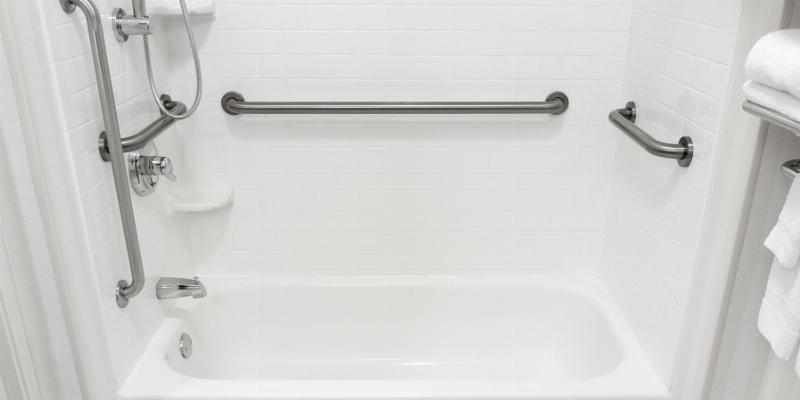
For homeowners who prefer to keep a tub, a safety tub with a swinging door is ideal. This type of tub is easy to enter and exit, and once inside, it fills and drains efficiently. A simple safety tub costs between $1,000 and $2,500, while a high-end model with features like temperature controls and whirlpool jets can cost $7,000 to $10,000.
Shower Options
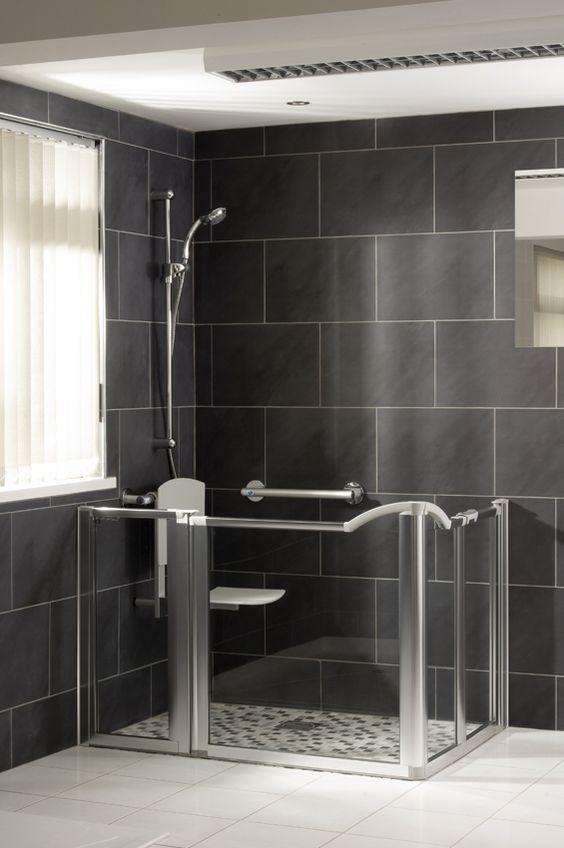
A roll-in shower should have a 15-square-foot stall to accommodate a wheelchair. A transfer shower helps individuals move from a wheelchair to the shower seat with ease.
Toilet Options
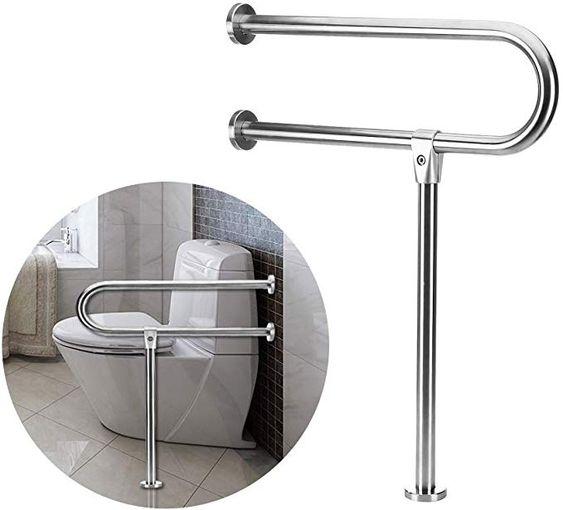
ADA guidelines recommend a toilet seat height of 17-19 inches with grab bars securely installed on both sides. If wall space is limited, consider installing hinged pick-up bars.
Pro Tip Takeaway: A combination toilet/bidet that assists users with personal hygiene is an excellent option for enhancing independence.
Grab Bars
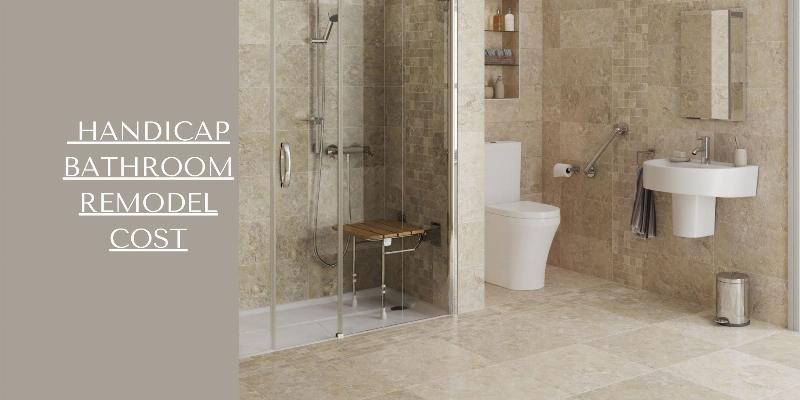
Installing grab bars is essential for safety and support. Grab bars should be placed strategically throughout the bathroom, particularly near the shower and toilet.
- Wall-Mounted Grab Bar: $80
- Pair of Floor-Standing Handrails: $200
- 5-foot Handrail: $100
- Labor Cost: $150 – $350
Pro Tip Takeaway: Ensure grab bars are anchored securely into the wall studs to prevent accidents.
Final Thoughts
Creating a handicap-accessible bathroom involves thoughtful planning and careful budgeting. Whether it’s widening doorways, installing a roll-in shower, or choosing ADA-compliant fixtures, every detail matters. At Smart Remodeling LLC, we specialize in designing and building accessible bathrooms tailored to your specific needs.
Contact us today to schedule a FREE consultation, and let’s create a safe, functional, and beautiful bathroom for your home in Houston.

